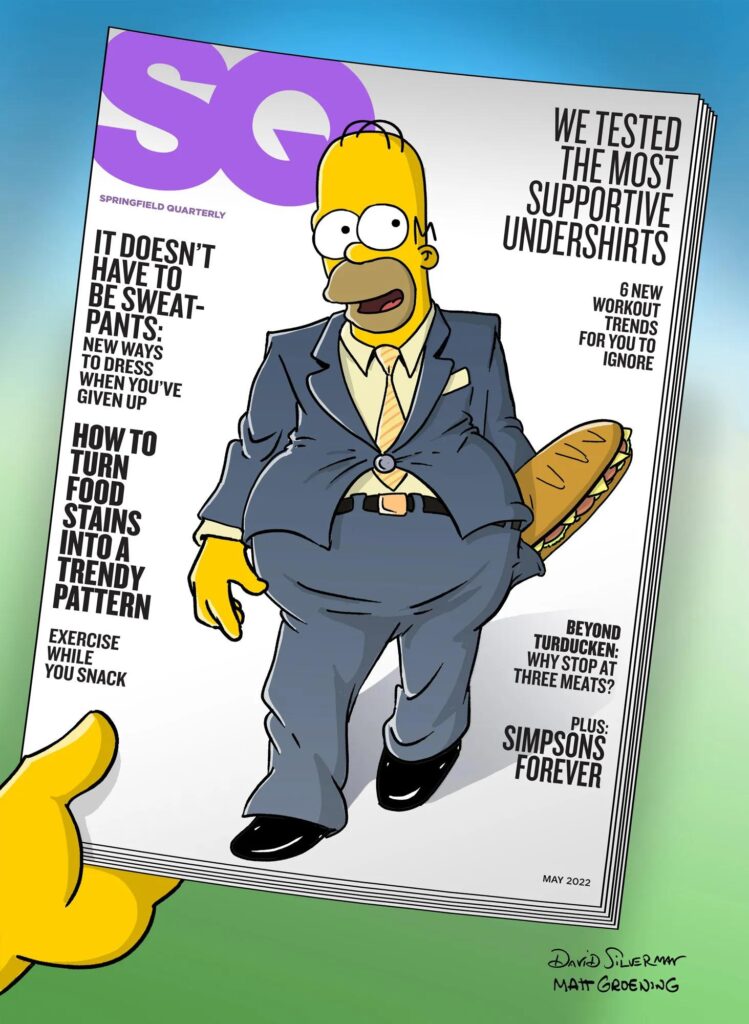A Cartoon That Changed Television Forever
When The Simpsons first aired in December 1989, few could have predicted that an animated sitcom about a dysfunctional family in Springfield would reshape the language of comedy and the structure of American television. What began as a series of shorts on The Tracey Ullman Show evolved into a cultural juggernaut: a program that has spanned generations, anticipated trends, and produced a canon of quotable lines and indelible characters.
For GQ, producers, writers, and long-time creative voices behind The Simpsons recently revisited the show’s biggest moments — the episodes, gags, controversies, and experiments that define the franchise. Their reflections reveal not just how a cartoon became one of the most influential works in television history, but how it continues to reinvent itself across decades of shifting cultural landscapes.
The Origins: From Shorts to Primetime
The early days of The Simpsons remain essential in any breakdown of its biggest moments. Executive producer James L. Brooks recalls the initial skepticism about airing an animated show in primetime. Networks in the late ’80s still viewed animation largely as children’s programming, unsuitable for adults.
Yet creator Matt Groening insisted the Springfield family could embody the satire of everyday life. Homer, Marge, Bart, Lisa, and Maggie were drawn with yellow skin and overbites, but they reflected American family dysfunction in painfully relatable ways.
The Christmas episode “Simpsons Roasting on an Open Fire” became the first primetime broadcast. Producers highlight it as a moment of risk: a story rooted in economic insecurity (Homer can’t afford gifts after a failed Christmas bonus) rather than slapstick hijinks. The choice set the tone for The Simpsons’ unusual mix of emotive and satire, immediately distinguishing it from cartoons before it.
The Golden Era: Seasons 3–8
Ask any fan or critic, and they will tell you that the so-called “golden era” produced some of the most iconic moments in television history. Writers like Al Jean, Mike Reiss, and David Mirkin engineered a run of episodes so dense with humor, pathos, and cultural commentary that they remain benchmarks in comedy writing.
Episodes such as “Marge vs. the Monorail,” “Last Exit to Springfield,” and “Homer at the Bat” demonstrate the show’s genius in balancing satire with absurdity. Conan O’Brien, then a staff writer, famously pitched the monorail story — a parody of American civic boondoggles — which became a defining episode for how Springfield operates as a microcosm of American society.
Producers admit that during this period, the writers’ room felt invincible. Ratings were astronomical, celebrities clamored for guest appearances, and every week seemed to bring a new cultural landmark. This was not just a cartoon; it was the central nervous system of popular culture.
Homer’s Evolution: From Buffoon to Everyman
One of the biggest moments discussed by producers is the evolution of Homer Simpson himself. Early episodes depicted him as an angry, almost abusive father. But the writers soon softened him, making him an oafish but loveable figure whose laziness, gluttony, and hare-brained schemes became allegories for American excess.
Episodes like “Homer’s Enemy” (introducing Frank Grimes) or “Homer Badman” (satirizing media witch hunts) showed that Homer could embody both the absurd and the political. Producers reveal that the character’s elasticity — capable of being everyman and caricature simultaneously — ensured his longevity. Homer could fail spectacularly but still return next week unchanged, ready for new misadventures.
Bartmania and the Rise of Merchandising
No breakdown of The Simpsons’ biggest moments ignores the 1990s phenomenon of Bartmania. “Eat my shorts” and “Don’t have a cow, man” became slogans printed on lunchboxes, T-shirts, and posters. Bart was briefly a counterculture hero, embraced by kids and scorned by parents.
Producers recall schools banning Bart Simpson merchandise for promoting “bad attitude.” Yet the wave of popularity also cemented the show’s financial empire. The Simpsons was not just a TV program but a brand — a force that reshaped Fox into a major network and proved cartoons could be merchandising gold.
This commercial moment remains bittersweet for the writers, who feared Bart’s catchphrases overshadowed the show’s deeper satirical ambitions. But in hindsight, Bartmania demonstrated how animation could drive both pop culture and commerce.
Tackling Society’s Flashpoints
One of The Simpsons’ most consistent strengths lies in its fearless approach to cultural issues. Episodes like “Homer’s Phobia,” featuring John Waters, broke ground in presenting gay culture positively in mainstream television. Producers describe fighting network censors to keep certain lines or jokes, arguing that satire was only effective if it remained unflinching.
Similarly, “Much Apu About Nothing” addressed immigration debates in the ’90s, while “Itchy & Scratchy & Marge”tackled violence in media. In each case, Springfield became a mirror for America’s anxieties.
Looking back, producers emphasize that these episodes remain some of the most rewarding — not just for laughs, but for pushing television into political and cultural relevance without moralizing.
Guest Stars: From Michael Jackson to Lady Gaga
Few shows have rivaled The Simpsons’ ability to attract celebrity cameos. From Michael Jackson voicing (anonymously) in “Stark Raving Dad” to more recent appearances by Lady Gaga, producers recount how the guest star phenomenon became both a creative thrill and a logistical challenge.
Some stars, like Leonard Nimoy or George Harrison, embraced self-parody. Others, such as baseball legends in “Homer at the Bat,” required careful negotiation. By the 2000s, the guest star tradition became almost expected — though critics sometimes argued it diluted storytelling.
Still, producers defend these moments as cultural time capsules. Guest stars, whether Elton John or Mark Zuckerberg, marked the show’s ongoing relevance across eras.
The Decline Debate
No GQ conversation about The Simpsons would be complete without addressing the elephant in the room: the widespread belief that the show “declined” after its golden era. Producers acknowledge the shift. As original writers moved on and television evolved, sustaining the razor-sharp satire of the ’90s became difficult.
But they push back against the narrative of complete decline. Later seasons brought experimentation — from “Behind the Laughter” (a mockumentary of the family’s “real” history) to visually daring couch gags. Digital animation allowed more elaborate visuals. And episodes like “Holidays of Future Passed” showed surprising emotional depth.
Producers stress that the show’s ability to evolve — sometimes unevenly, often unpredictably — is what keeps it alive. A 35-year run cannot be measured only by its peak years.
When Satire Becomes Reality
Among the biggest moments the producers reflect on are the eerie instances when The Simpsons seemed to predict the future. From Donald Trump’s presidency to smartwatches and Disney’s acquisition of Fox, these episodes have fueled viral conversations about the show’s clairvoyance.
Producers clarify that these were not prophecies, but rather sharp observations of cultural trends extrapolated to absurd extremes. Still, they admit that the frequency with which satire became reality only underscores the show’s power as social commentary.
When fans share screenshots of these predictions decades later, the producers view it as a testament to the show’s ongoing cultural afterlife.
Global Reach and Legacy
By the 2000s, The Simpsons had become a truly global phenomenon. Dubbing into dozens of languages, Springfield became recognizable everywhere from South America to the Middle East. Producers recall trips abroad where fans quoted obscure jokes from seasons long past, proof of the universality of humor rooted in family dysfunction and societal satire.
Merchandise, theme park rides, video games, and the 2007 Simpsons Movie further entrenched its legacy. The show no longer lived solely on television but across a transmedia empire. For producers, this expansion into different formats remains one of the show’s proudest achievements.
The Simpsons Today: Relevance in the Streaming Era
In the present era of streaming platforms and fragmented audiences, The Simpsons continues to air new episodes while also thriving on Disney+. Producers highlight how younger viewers now discover the show in nonlinear ways, jumping from season 5 classics to season 25 experiments in a single sitting.
The challenge, they admit, is competing with the sheer volume of content. Yet The Simpsons’s back catalog — over 750 episodes — is an advantage few shows can match. Producers believe its adaptability, coupled with timeless characters, ensures relevance even in a saturated entertainment market.
A Legacy of Laughter and Satire
When producers break down The Simpsons’ biggest moments, they paint a picture of a show that is at once historic and continually in flux. From a risky primetime debut to the global juggernaut of Bartmania, from satire of politics to uncanny cultural predictions, the series has redefined what television comedy can achieve.
More than three decades in, Springfield still feels alive: Homer still bungles, Lisa still questions, Marge still nurtures, and Bart still rebels. For the producers who shepherded the series across eras, the biggest moment may not be any single gag, episode, or prediction — but the fact that The Simpsons endures as the longest-running comedy in American history, still holding a mirror up to society, one joke at a time.
No comments yet.








